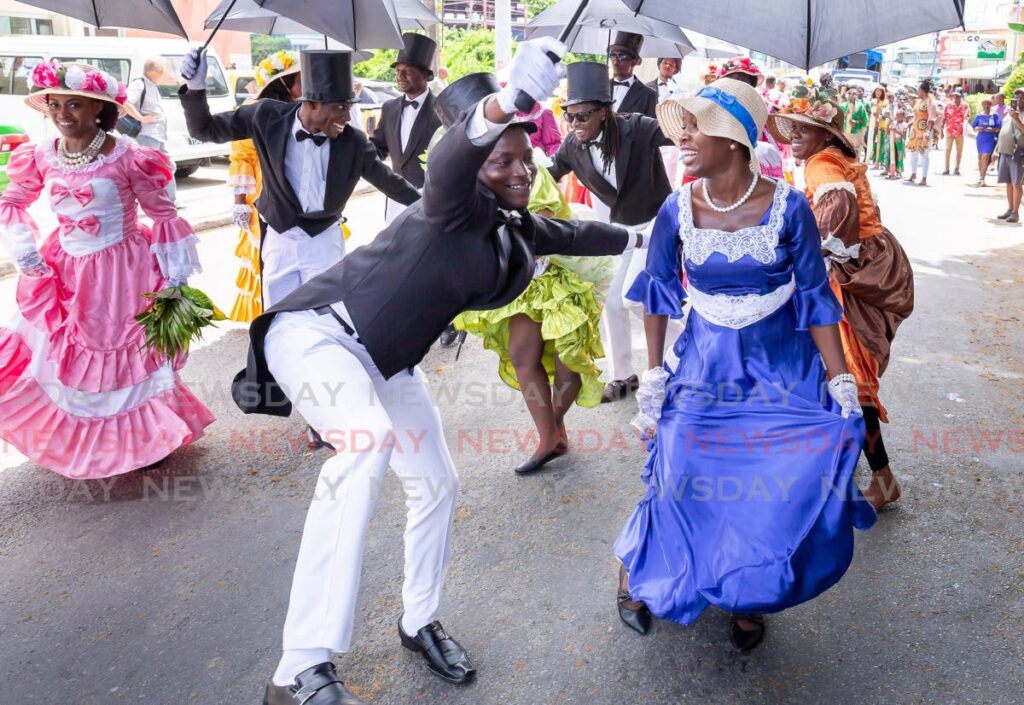First phase of emancipation in Tobago

Dr Rita Pemberton
'For the Africans, liberty began with reducing planter control by establishing their homes off the estate, owning their own land and obtaining a fair return for their labour. To the planters, these were untenable and were strongly opposed'
AUGUST 1, 2023 marks 185 years after the passage of the Emancipation Act which legally changed the status of African labourers in the British colonies from slaves to free workers. While there was much jubilation at the passage of the law, there was sore disappointment with the post-law reality which fell far short of the expectations of the African population.
Apart from the law, nothing else had changed on the island. The administration, which was made up of plantation owners and their sympathisers, continued to function as it had done in previous years and the imperial government had given clear indications that it did not intend to support any revolutionary change in the operations of the colonies. Hence there was nothing in place for the transition from enslaved to free workers. There were very limited opportunities for alternative employment on the island, so the freed Africans remained virtually bound to the estates.
In his proclamation on the eve of emancipation, Lieutenant Governor Henry Darling’s advice to the Africans gave voice to both the concerns and intent of the planting community with his emphasis on labour and punishment. He urged the Africans to demonstrate the qualities of good workmanship: sobriety, peacefulness, industry; faithful discharge of duty to employer; never to engage in idleness, neglect or careless performance of duties or acts of dishonesty, and to exercise due care with their masters’ property.
He promised the freed men and women that they would be protected by the magistrates but his most powerful indication that nothing would change in the society was his assurance that freed people would not be punished with any less severity than were slaves or apprentices. The punishment regime that was a central feature of the period of enslavement was destined to be maintained after 1838. This was no promise of liberty. However, Africans of Tobago possessed their own ambitions and liberation was highest on their priorities.
For the Africans, liberty began with reducing planter control by establishing their homes off the estate, owning their own land and obtaining a fair return for their labour. To the planters, these were untenable and were strongly opposed. The Tobago planters placed obstacles in the path of African landholding and alternative employment, setting the stage for a strong clash of interests on the island during the years of emancipation.
After 1838, life in Tobago was based on the contradictions between the expectations and realities of the two protagonists on the island. The planters’ aim was to maintain the status quo as existed before the passage of the act so they made no attempt to bring about any change to facilitate emancipation. Their focus was on restricting freedom and the undesirable social changes for them that it would mean.
However, it was also of utmost importance to them to preserve their labour force since there were no other available sources of cheap labour and the sustenance of the Tobago sugar industry was dependent on the resident labour force.
The island’s sugar industry was on the decline. Tobago’s sugar had to compete with other producers both within and outside the British Empire. The island produced poor quality sugar which attracted the lowest prices on the international market, and many Tobago estates did not return a profit. The Tobago sugar factories were antiquated and planters were unable to modernise their operations for want of credit because there was no longer any investor interest in Tobago.
Planters stubbornly held on to the hope that a turnaround in the industry could be attained if the cost of labour could be reduced so their efforts were directed to offering the lowest wages to the freed African population, which were strongly resisted. Therefore, labour issues dominated the island’s post-emancipation history.
There were seven categories of workers in the labouring class which were operative in the island at 1838. This made labour relations on the island very complex because the terms of labour had to be negotiated separately for the members of each group.
After the first four years of post-emancipation wrangling between workers and employers over terms of employment, planters across the island adopted metayage, the system of sharecropping in which the costs and returns of production were shared by planters and workers. It was hoped that this system would satisfy the needs of the planters and allow a smooth operation of the sugar industry.
Despite its rapid adoption across the island, the system satisfied neither planters nor workers and, in fact, it provided another avenue for intense conflict in the society, at the centre of which was the question of labour.
The arrangements for the operations of metayage varied in different parts of the island and from one estate to another. There were also variations when there was a change of ownership or management of an estate, which stimulated complaints from workers over the new terms of engagement with which they were not accustomed. In addition, there were variations in the terms for each of the different classes of labourers.
Overall, workers, regardless of their class, sought to get the best deal for themselves out of the system and, in some cases, managed to turn the system in their favour.
Ironically, the system which planters initially viewed as the possible salvation of the sugar industry came to be considered too beneficial to the workers and provided a bone of contention between the aggrieved planters who sought to reduce worker benefits and determined workers who sought to get the best deals for themselves.
The dissatisfied planters continued, unsuccessfully, to try to convince the authorities of their need for labour based on the “shortage of labour” which they claimed existed on the island and difficulties they encountered in their attempts to engage labour on acceptable terms.
The Tobago Assembly sought imperial government approval for several immigration schemes including from India and they referenced the success which had been attained by the Trinidad sugar industry with Indian immigrants. Among other things, the immigrants were to demonstrate to the local workforce the desirable work habits – sustained labour and weekend work.
The Colonial Office turned down all immigration proposals from Tobago on the grounds that the island could not afford to pay for them, and the imperial government was not prepared to bear the cost of immigration in the colonies.
It was clear that the Tobago planters intended to create a controllable work force which would accept the paltry wages they offered. It was their intention to have emancipation without freedom. The resident labour force was not prepared to work on those terms and the complex labour system on the island, which was made even more complex with the addition of the system of metayage, added a period of contestation between planters and workers, which characterised the first years of emancipation and dominated the post-emancipation years right to the end of the 19th century.


Comments
"First phase of emancipation in Tobago"